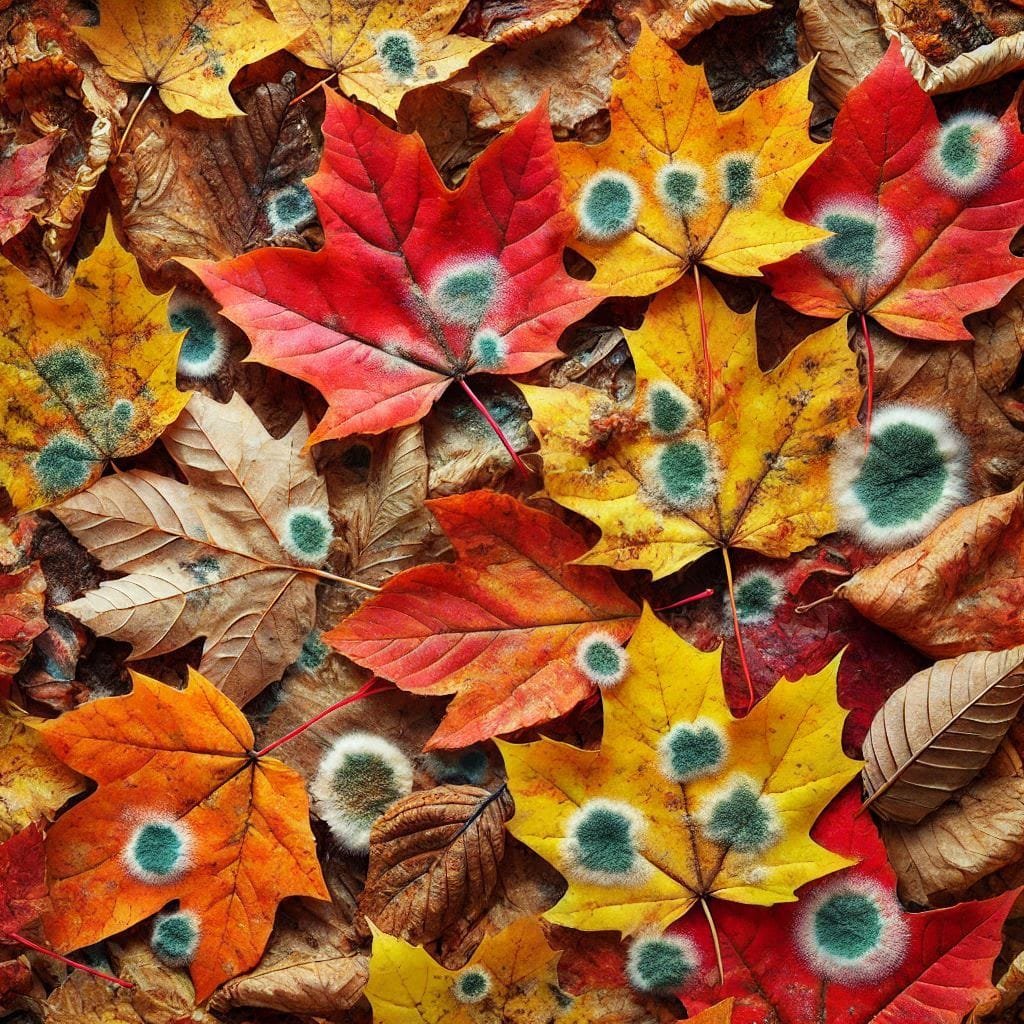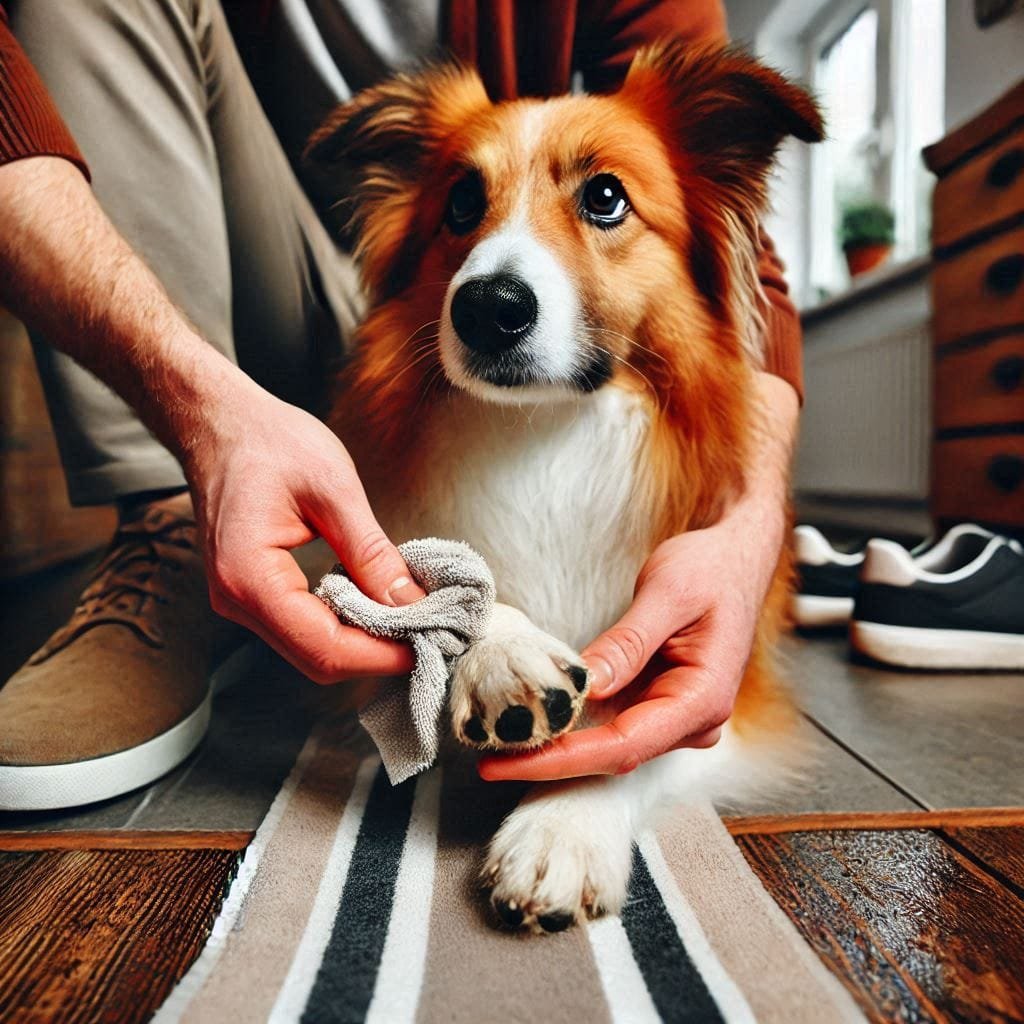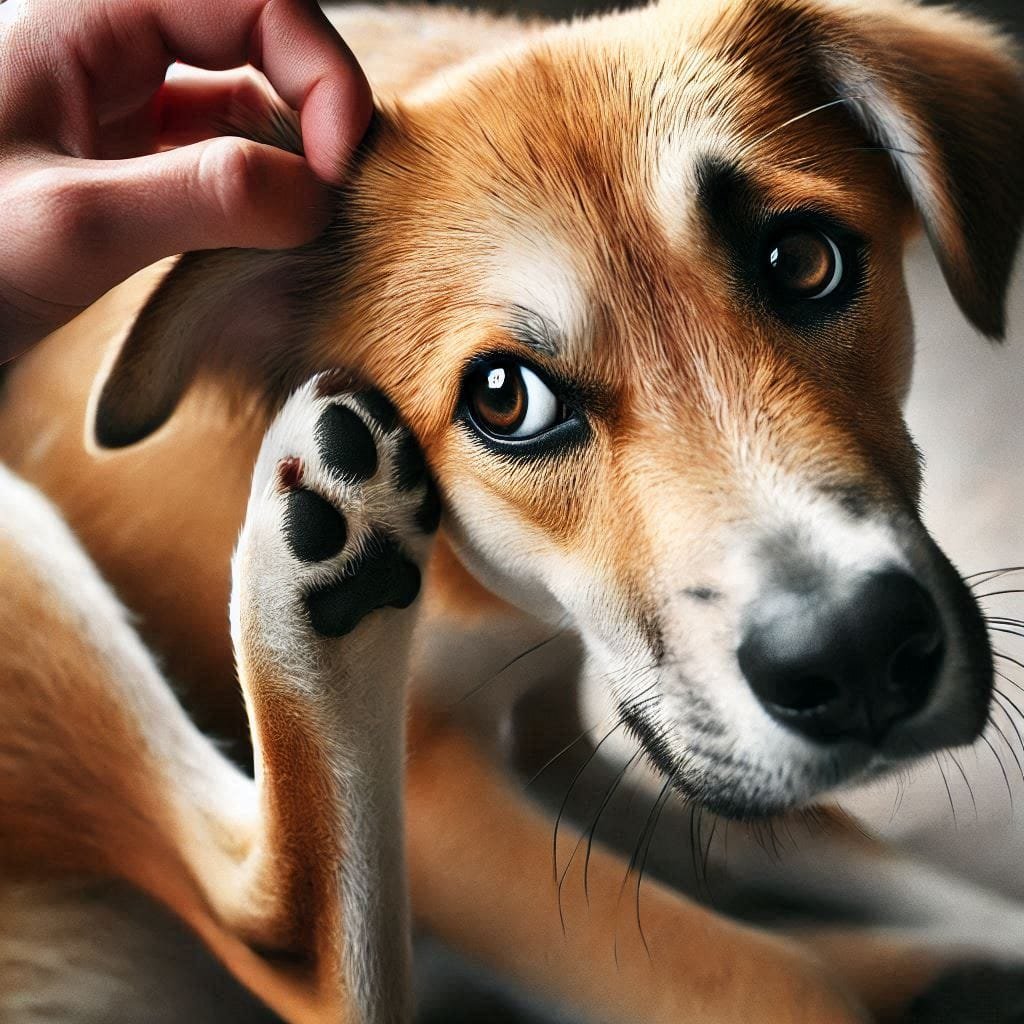With fall comes cooler temperatures, beautiful leaves, and… allergies! Just like us, dogs and cats can suffer from seasonal allergies, too. In fact, during fall, many pets experience symptoms from environmental changes that can make them uncomfortable or even miserable. In this blog, we’ll dive into the common signs of fall allergies in pets, what might be causing them, and simple treatments to help your furry friends feel better.
1. Understanding Fall Allergies in Pets
As the seasons change, new allergens are released into the air. Fall often brings mold from decomposing leaves, pollen from late-blooming plants, and dust mites that thrive indoors as we start heating our homes. Some pets are more sensitive to these allergens than others, and those with existing allergies may feel worse in the fall.

“Mold on fallen leaves can trigger allergies in sensitive pets.”
2. Signs Your Pet Might Have Allergies
Pets can’t tell us when they’re feeling itchy or uncomfortable, so it’s important to know the signs of allergies. Here are some common symptoms of fall allergies in dogs and cats:
- Excessive Scratching or Licking: If your pet seems itchier than usual, it could be due to an allergic reaction. Cats often lick themselves, but if you notice them focusing on one area, this could be a sign.
- Red or Irritated Skin: Check for red or inflamed patches, particularly on your pet’s belly, paws, or face. This is common in dogs with environmental allergies.
- Watery or Red Eyes: Just like humans, pets can experience watery, red eyes when they come in contact with allergens.
- Runny Nose or Sneezing: Although less common, some pets may show signs like sneezing or a runny nose, especially after going outside.
- Ear Infections: Chronic ear infections can sometimes be linked to allergies, especially in dogs. Look for head shaking, scratching, or a funny smell coming from their ears.
3. Common Fall Allergens for Pets
Knowing what triggers your pet’s allergies can help you manage their symptoms. Here are some of the common allergens that flare up in fall:
- Mold Spores: Fallen leaves and damp outdoor areas can harbor mold spores, which are a top cause of fall allergies.
- Ragweed Pollen: Ragweed is a major source of pollen during the fall months and can cause reactions in pets that spend time outside.
- Dust Mites: As temperatures drop and we start using heaters, dust mites thrive in warm indoor spaces.
- Indoor Pollutants: Pet dander, smoke from fireplaces, and even certain cleaning products can irritate your pet’s respiratory system, especially in the fall.
- Powerful & Fast Purification: Experience rapid air cleaning with 4 complete Air Changes/Hour for rooms up to 269 sq ft. …
- Advanced 3-Layer Filtration: Imported triple-stage filter captures pet dander, dust, pollen, smoke, mold, and stubborn o…
- Versatile for Any Room: Enhance your living room, bedroom, study, office, apartment or kitchen with customizable 7-color…
4. How to Help Your Pet Manage Fall Allergies
Fortunately, there are several simple ways to reduce allergy symptoms and keep your pet comfortable through the season. Here are a few tips:
- Wipe Down After Walks: Use a damp cloth or pet-safe wipes to clean your pet’s paws, belly, and coat after outdoor time. This helps remove pollen or mold spores that might otherwise linger.
- Regular Baths: A gentle bath once every 2-4 weeks can help remove allergens from your pet’s coat. Use a hypoallergenic pet shampoo and avoid over-bathing, as it can dry out their skin.
- Use an Air Purifier: An air purifier can help trap indoor allergens like dust mites and mold spores. Choose one with a HEPA filter for best results.
- Wash Bedding Frequently: Pet beds, blankets, and toys can accumulate allergens. Wash these items weekly in hot water to kill dust mites and remove other allergens.
- Limit Outdoor Time on High-Allergy Days: Check pollen levels and try to limit your pet’s time outside when they’re high. If your pet is especially sensitive, this small change can make a big difference.

Image Placeholder: A dog owner wiping their dog’s paws with a cloth after a walk.
Description: “Wiping your pet’s paws after outdoor time can help remove allergens like pollen and mold.”
5. When to Talk to Your Vet
If you’ve tried everything and your pet is still experiencing severe allergy symptoms, it might be time to visit the vet. There are several treatments and medications available to manage allergies, including:
- Antihistamines: These can reduce itching and inflammation and are available for pets in formulations similar to human antihistamines.
- Topical Creams or Sprays: Your vet may prescribe a medicated cream or spray for irritated skin or to relieve itching.
- Allergy Testing and Injections: If allergies are severe, your vet might recommend allergy testing to determine specific triggers. Allergy shots may be an option if symptoms are persistent and significantly affect your pet’s quality of life.
Image Placeholder: A concerned pet owner with their dog at the vet, discussing treatment options.
Description: “When allergies are severe, a visit to the vet can help you find effective treatment options.”
Final Thoughts
Fall allergies can be a hassle, but with a few simple steps, you can help your pet stay comfortable and happy all season long. By identifying and managing triggers, practicing regular grooming, and keeping your pet’s environment clean, you can make a big difference in reducing allergy symptoms.

“Keep your pets happy and allergy-free this fall by managing their environment and staying aware of symptoms.”
Enjoy the season with your furry friends, and remember: a little extra care can go a long way in keeping them allergy-free during fall!





